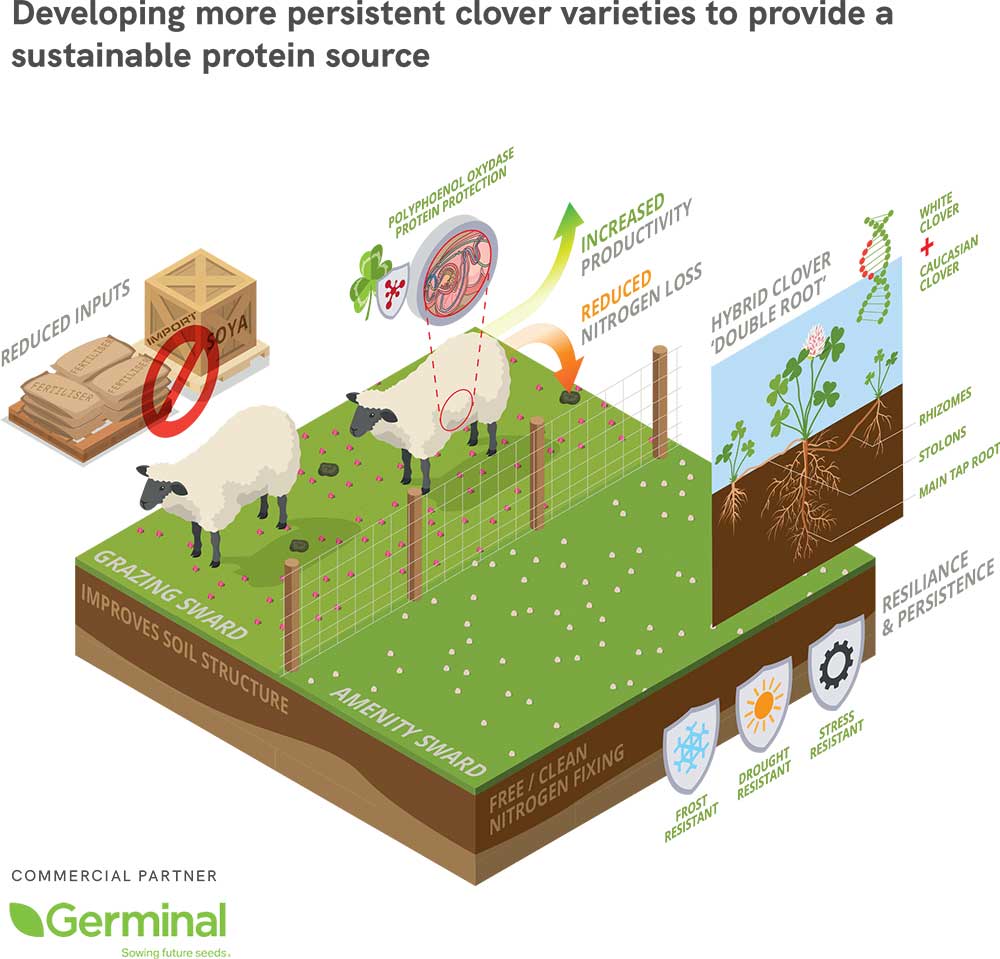Persistent Clover Varieties Impact Case Story
Persistent Clover Varieties

Persistent Clover Varieties: Resilient, Home-Grown Protein for Sustainable Farming
Red and white clovers play a key role in sustainable livestock production. They reduce the need for manufactured nitrogen fertilisers by fixing atmospheric nitrogen and provide a valuable, home-grown protein source—offering an alternative to imported soya. However, clover use has historically been limited by its lack of persistence and resilience in grazing or cutting systems.
Scientists at IBERS have overcome these challenges by developing new clover varieties with significantly improved longevity and performance under field conditions.
To enhance the persistence of white clover, our researchers successfully created the world’s first cross between white clover and Caucasian clover, combining stolon (above-ground runner) formation with a deeper tap root system. This unique trait improves drought tolerance, resilience under grazing, and long-term survival. The result is AberLasting, a variety marketed by Germinal as DoubleRoot, now in widespread use.
Meanwhile, red clover has traditionally been unsuitable for grazing due to crown damage from livestock, which often kills the plant. IBERS researchers addressed this by breeding a creeping form of red clover that behaves more like white clover in the field. This new approach enables red clover to be grazed as well as cut, opening up more flexible and sustainable livestock systems.
Red clover also contains the enzyme polyphenol oxidase (PPO), which helps protect dietary protein in the rumen, improving nitrogen use efficiency and reducing emissions.
These novel IBERS-bred clover varieties deliver clear benefits:
- Reduced reliance on manufactured nitrogen fertiliser
- Home-grown protein to replace imported soya
- Improved sward persistence and resilience under grazing and cutting
- Greater flexibility for livestock systems
- Reduced nitrogen emissions from ruminant production
The new red clover variety—RedRunner, also to be marketed by Germinal—is currently undergoing national plant variety trials and is expected to be released soon. As another global first, it represents a major step forward for clover breeding and sustainable grassland management.
Downloads
Download our full IBERS Impact Case Stories Booklet here: Innovations for a Changing World Case Story Booklet
